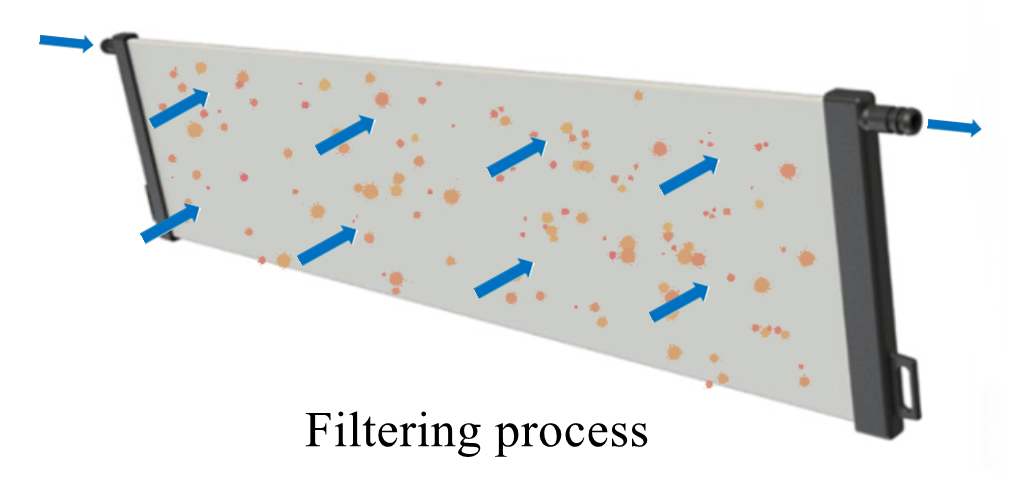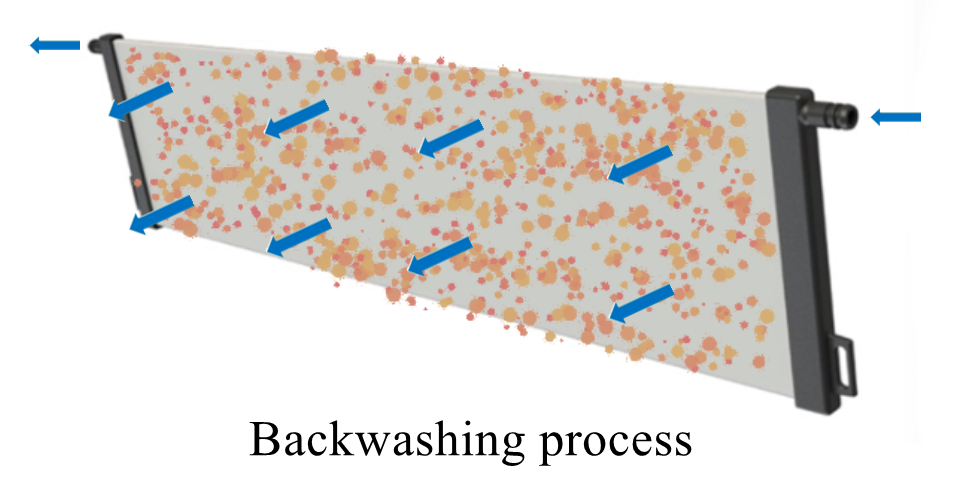Five Cleaning Methods of Silicon Carbide flat sheet membrane
2021-04-30
Five Cleaning Methods of Silicon Carbide flat sheet membrane
Silicon carbide ceramic membrane is recognized as the top end product in the field of inorganic ceramic membrane. Among them, silicon carbide flat sheet membrane has been widely used in drinking water treatment, liquid waste, MBR, landfill leachate treatment, etc. However, during the operation of ceramic flat membrane, some substances will react on the membrane surface or in the membrane pore, which makes the pollutant block the surface or pore of the membrane, resulting in the decrease of the filtration performance of the membrane.

In order to ensure the normal and efficient operation of silicon carbide flat sheet membrane, a reasonable and effective cleaning method is very important. The main cleaning methods of silicon carbide flat sheet membrane are physical cleaning and chemical cleaning. Five major cleaning methods are as follows:

1.Backwashing
Backwashing is by applying pressure on one side of the permeable liquid of the ceramic membrane to make the permeable liquid reverse through the ceramic membrane. On the one hand, the method can remove the pollutants blocked in the ceramic membrane pore, on the other hand, it also has a certain washing effect on the adhesion layer of the ceramic membrane surface on the liquid side of the material.
The backwash process can restore the membrane flux to a certain extent and slow down the membrane fouling.


2.Low pressure and high flow rate cleaning
Low pressure and high flow rate cleaning means to increase the flow rate of membrane surface as much as possible under lower operating pressure. This method reduces the probability of solute molecules staying on the membrane surface.
3.Electric field
The principle of electric cleaning is to increase membrane flux by applying external electric field to move charged ions and small molecules.
4.Ultrasonic
Ultrasonic cleaning refers to the use of ultrasonic cavitation in the liquid and the acceleration of flow rate to disintegrate and separate the pollutants, so as to increase the membrane flux.
5.Chemical soaking and recirculation
The principle is to use cleaning agent to react with foulants, and then separate the foulants from the membrane. Cleaning agents can be used alone or in cooperation with each other. Chemical cleaning agent can be divided into pickling reagent, alkali washing reagent, oxidant, metal chelate, surfactant. The cleaning effect of different cleaning agents on ceramic membrane is also different, so in order to obtain the best cleaning effect, the appropriate chemical agent should be selected according to the foulants.
Physical cleaning and chemical cleaning have their own good or not. Below is the comparison table for your concern:
Cleaning method | Physical cleaning | Chemical cleaning |
Advantage | No extra fouling | Good pertinence |
Simple operational steps | Complete removal of foulants | |
Can be cleaned online | Stable removal effect | |
Disadvantages | Effective only in the early stages of fouling | Introduction of new fouling |
The Cleaning effect decreases rapidly with extension of time | More steps between operation and cleaning | |
No clear pertinence |
The silicon carbide flat sheet membrane has asymmetric two-layer membrane structure (separation layer, support layer). This unique membrane structure not only leads to the membrane high flux rate, but also gives the membrane a backwash pressure during backwashing, which improved the cleaning effect, in addition, the pure silicon carbide membrane material has excellent corrosion resistance and chemical stability, which can be adapted to chemical cleaning agent with strong acid and strong alkali, these characteristics make the membrane cleaning very easy.

 English
English 中文
中文






